Consumption of materials for facing with ceramic tiles
Ceramic tiles have long ceased to be considered only as a moisture-proof material. Many varieties of facing ceramics used in construction, due to the original facial design and the highest quality, are used today not only for lining bathrooms, but also in the design of residential and office interiors.
The photo examples presented in this article speak about this quite eloquently. Next, we will tell you which ceramic facing materials are used for interior work, and offer a video on this topic.
The content of the article
Ceramics in the interior
When it comes to decoration, first of all, of course, referring to the floors (see. Ceramic flooring - the right veneer) It is unlikely that someone will be tiling the walls, and the flooring, in this case, will include wooden - it can only be the other way around.
If the main selection criterion ceramic tiles for the bathroom, is its moisture resistance, then in the living room or any other room, the number one task is the proper aesthetics of the surface.
By and large, for a person there is not much difference what kind of clay a tile is made of - the main thing is that it provides a solution to the task. Ceramic cladding materials offered by manufacturers today are so diverse that they can compete with any other material in terms of decorativeness, even wallpaper. Another thing is the price of the issue, because the more complicated the decor, the more expensive the tiles.
When creating an interior concept, you should only remember the main rule of design: bright accents are served in a dosed manner. And if the “highlight” is to become the flooring, then the walls should be finished in neutral colors.
Compliance with the measure is extremely important, otherwise the interior will turn out to be overloaded, and will only be annoying. In general, the ability to correctly compose shades, like many other nuances of interior design, needs to be studied.
Decorative effects
Before we start the discussion, what materials for facing with ceramic tiles will be needed in the work, we will consider the most popular options for its front decoration. We will pay attention not only to decor, but also methods of laying tiles that can make the coating more interesting.
Wood imitation
All records are beaten by imitation of wood, and not only its natural pattern, but also the shape of the products used for interior decoration. Basically, this is piece parquet, and parquet board.
The similarity between ceramics and wood is so complete that visually not everyone will be able to determine which material is used in the decoration.
So:
- Imitation of a parquet board can be considered a win-win option, because, unlike the marble texture, it looks harmonious even in the bedroom. Ceramics has only one drawback: it is cold. For this reason, it is better to make the ceramic floor in living rooms heated. Of course, the carpet can also solve the problem, but it will hide the beauty of the floor covering.
- If we talk about wall decoration, then there are many options. Using a ceramic board, as well as real wood, designers focus on one area of the room.This is the design of the studio room we see in the example above.
But, choosing a tile with a lighter color, you can perform the main finish, as shown in the following example. A tile that resembles a type of parquet in shape is also good because it is convenient to lay it with a “herringbone” or a “snake”, which gives the coating additional effect.
Stone and brick tiles
Judging by the degree of popularity of a particular decor, when it comes to interior decoration, the second place is occupied by imitation of natural stone. Of course, stone to stone, and the monumentality of marble is not always appropriate in a residential interior.
But in various public institutions: salons, galleries, exhibition and trading floors, marble finish is most common.
So:
- For a home interior, you can always pick up an imitation of stone (see Ceramic stone tiles for interior decoration: key features), not claiming monumentality: sandstone, dolomite, onyx. This tile is not polished, but has a matte anti-slip surface. For the floor, this is of no small importance, since walking on a perfectly smooth surface is fraught with consequences.
- If the floor tile has a sufficiently large format, and imitates only a stone pattern, then options for wall decorationare indistinguishable from stone and in shape. The texture of the tile can be stylized for any variant of its cutting: “noodles”, stones with chips, combined rectangles, or the exact geometric size.
- Imitations of stone occupy an honorable second place not only in interiors, but also in the decoration of facades. Only in this case, the first place belongs not to wood, but to brick. In principle, brick imitation has been successfully used for interior design. Many styles, such as: country, loft, hi-tech, art deco, can not do without real or simulated brickwork.
- When it comes to brick styling (see Indoor brick and tile), ceramic tiles and imitate something special. Since both tiles and clay bricks are made from the same raw materials, it is not difficult to achieve similarity for manufacturers - it is enough to give the products the necessary shape. When is it better to use facing bricks for decoration, and when do you need to give preference to tiles?
- The fact is that brick cladding requires rigid support, since the brick is very heavy. If the design with the participation of brickwork is conceived in a house under construction, then, of course, it is easier to erect walls with decorative cladding. In this case, the main wall is laid out of ordinary brick, and immediately it is faced with decorative brick.
- Such cladding is not only decoration, but also part of the supporting structure, and can be turned both inside the building and out. One or several internal partitions can be built from the facing brick, thereby killing the “two birds with one stone” at once - this is how the zoning of the interior of the house and the design of the walls are made.
If such a concept of decoration was not foreseen in the process of building construction, then it makes no sense to use a brick for interior decoration. Laying is more time-consuming, takes up the useful area of the room, and costs much more in cost. Moreover, with the help of tiles in the form of a small rectangle, you can create beautiful geometric patterns.
Relief tile
At the peak of fashion, and tile imitating the skin. In the shops you can see beautiful collections stylized as crocodile, python, lizard, zebra, etc.
Tiles with a similar relief can be safely used when decorating the interior in such styles as: modern, chanel, neo-classicism, safari, biotech.
So:
- For boudoir styles, a tile that imitates soft leather panels with a carriage tie is better. How wonderful it looks, you can see the above example. The advantage of tiles over genuine leather is both in cost and, especially, in the durability of the coating.
- The relief on the tile does not have to imitate something. It can be any three-dimensional pattern: both floral and geometric. In general, finishing materials with 3D effect have become extremely popular. Naturally, manufacturers of facing ceramics also did not stand aside, because if you do not follow fashion trends, you can quickly become uncompetitive.
- We offer collections of tiles, the surface of which is very similar to decorative plaster. This is not a color, but a relief, which is performed on a plastic covering layer, using some kind of tool. Even the color scheme of such tiles often corresponds to various shades of cement.
- Such tiles, as well as decorative plaster, are used mainly to create accents in the room. In kitchens and bathrooms it is better not to mount it, since it is much more difficult to wash a relief surface than a smooth one.
- There are many other variations of tile cladding. Floral themes and mosaic panels are somewhat losing ground, giving way to geometric patterns, bee honeycombs, tiles with a reflective effect. Often they are combined with oriental motifs, or fit into the patchwork patchwork style.
- When facing walls and floors, you can use tiles of different sizes - this mix looks very stylish. In the collections of one manufacturer, you can always choose different formats with the same design. You can also take the same format and design, but with different, well-matching shades, which we see in the photo above.
Pay attention to the original layout of the tiles at the bottom of the wall. By the way, you can come up with your own version.
If you made a successful selection of tiles, it remains only to correctly produce the cladding. The instructions in the next chapter will touch on this topic.
Rules to be observed when facing
No matter what elegant tiles you buy, without proper preparation of the walls, nothing good will come of it. The wall must first be cleaned to the base, and then leveled. This is rule number one!
- Do not think that alignment can be done by laying tiles on a thick layer of mortar. Some masters do this, but this method is only valid for lining a small bathroom with cheap tiles - where the lining does not pretend to be a design.
If you use large-format tiles with a relief or pattern to be joined, or you have come up with an original layout option, a high-quality coating will be obtained only on an even basis. In addition, you also have to do the markup!
Consumption of materials and preparation of the base
Calculating the required number of tiles is not at all difficult. It is much more difficult to navigate, what is the cost of ceramic tiles facing related materials.
Basically, it is a cement mixture for leveling and tile adhesive. Well, let's calculate together how much and what will go into the facing of, say, a 20m2 wall.
- As for leveling, the amount of plaster mix will depend on the quality of the base surface. Therefore, you need to start by hanging the walls with a plumb line. You can do without preliminary alignment only if you live in a large-panel house.If the walls are brick or block, then they need to be plastered.
- One layer of plaster will be quite enough, because the surface is not prepared for painting. It is not necessary to smooth, grind and grind the plastered surface, it is enough to eliminate irregularities. Suppose the result of hanging showed that the thickness of the screed should be 1.5 cm.
Gypsum plaster does not provide the proper strength of the screed, therefore, to prepare the foundation, you need to take the starting composition on a cement basis. This is rule number two!
- The consumption rate for ceramic tile lining of such a mixture is, on average, 17 kg / m2, with a layer thickness of 1 cm. Therefore, a screed of 1.5 cm will leave 25.5 kg. We multiply this amount by our quadrature, and we get 510kg. We will need so much dry putty to plaster a wall of 20 m2. In bags, usually 25 kg of the mixture. Dividing 510 by 25, we learn that we need to buy 20 bags.
- By the way, on a flattened base, tile adhesive is used more economically. And yet, it depends on the thickness and format of the tile. The larger the cladding elements, the thicker the adhesive layer required to be applied during installation. Take the average norm: with a layer thickness of 4 mm, the consumption will be about 2.5 kg / m2. So, on 20m2 of the area, 50 kg of glue, that is, 2 bags of 25 kg each, will leave.
As for the grout, its consumption depends on the thickness of the seams, and, again, the size of the tile. The smaller it is, the more seams.
The sellers have tables in which the consumption rates of the grout mixture are prescribed for all cases. If, for example, you have tiles with a format of 250 * 330 mm, the width and depth of the seam should be 3 mm and 8 mm, respectively.
In this case, the grout consumption will be 300 grams per 1 m2 of cladding.
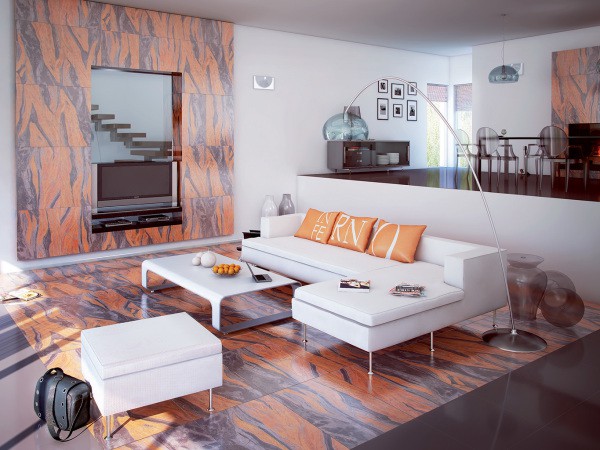

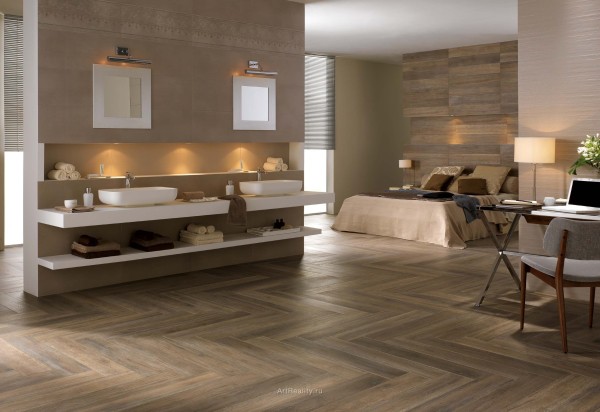
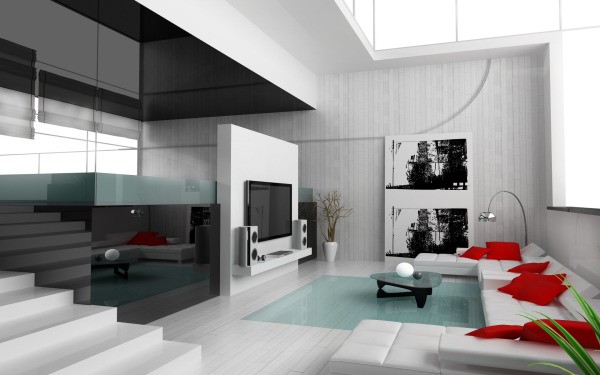
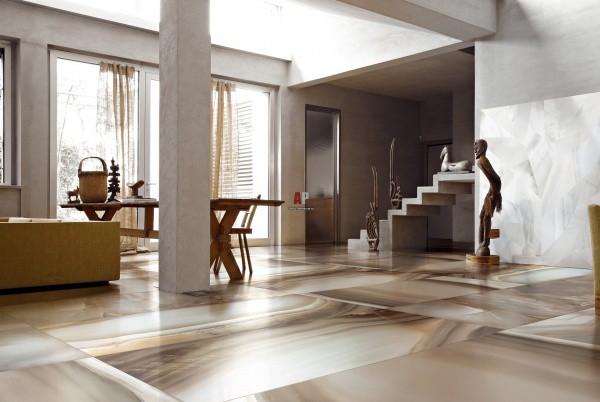
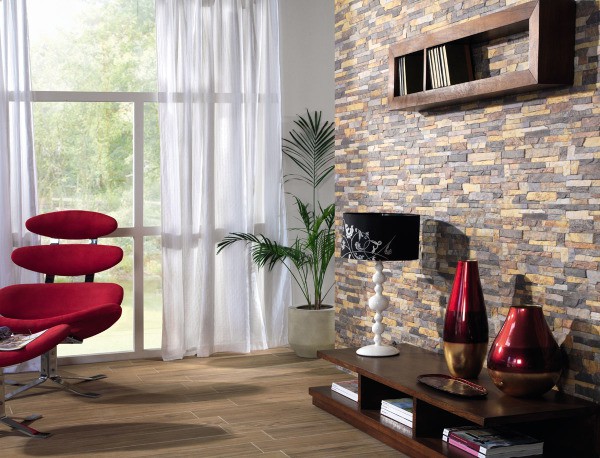
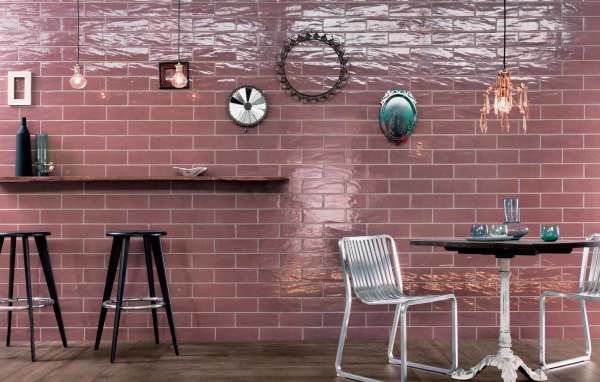
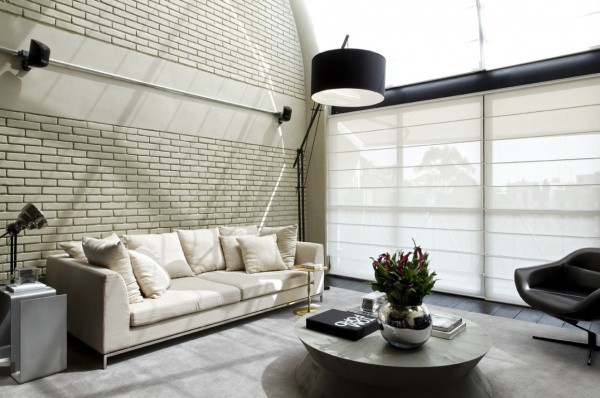
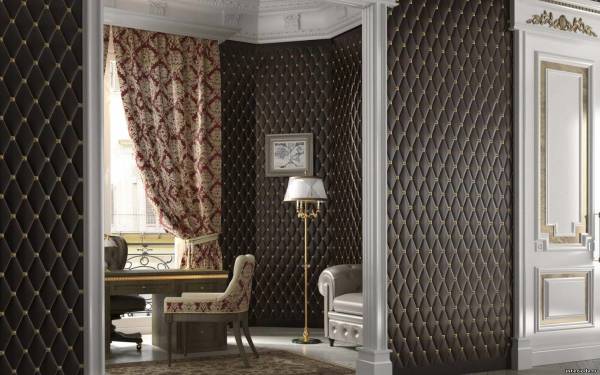
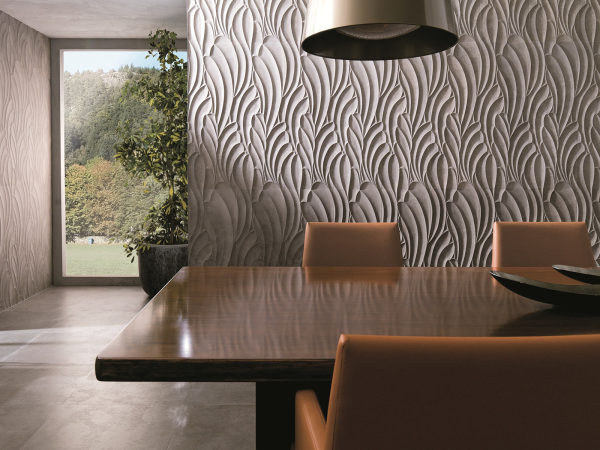
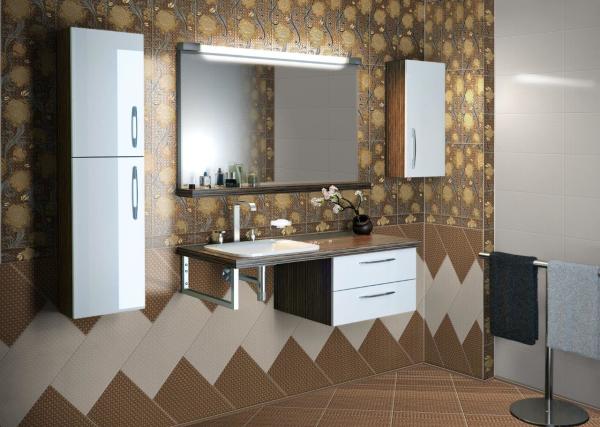
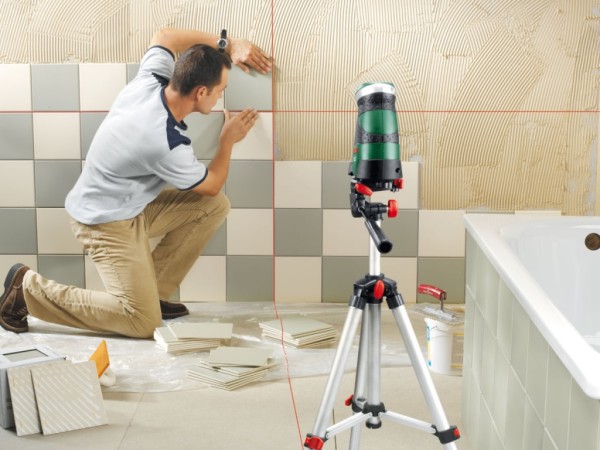
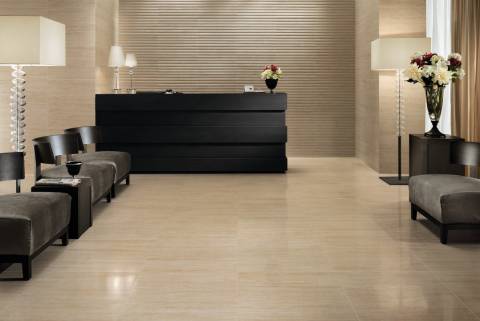

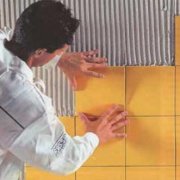

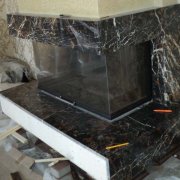
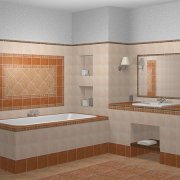
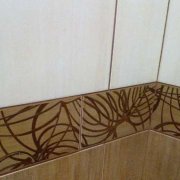
It is possible that the imitation of wood made of ceramics can not be distinguished, at first glance, from natural. But it is enough to stand on it with bare feet, and the difference will be felt unmistakably - the ceramic floor is cold.